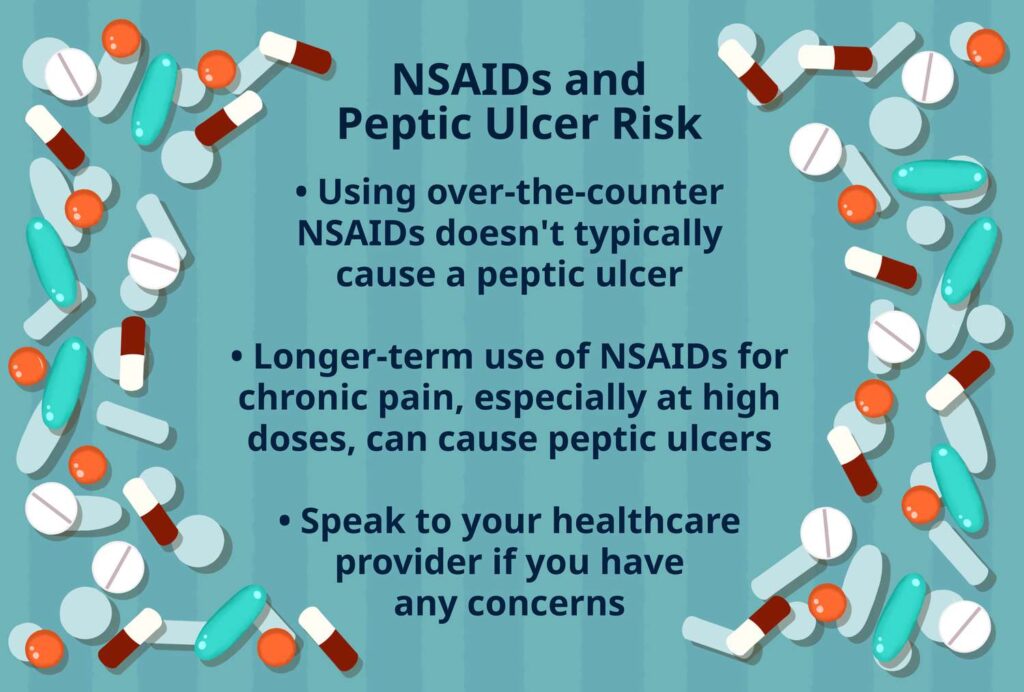Nonsteroidal anti-inflammatory drugs (NSAIDs) are among the most widely prescribed medications for pain and inflammation. Despite their efficacy, they are a leading cause of gastric mucosal injury, leading to ulcers, gastrointestinal bleeding, and even perforation. NSAIDs inhibit cyclooxygenase (COX), particularly COX-1, reducing prostaglandin synthesis essential for mucosal defense. This reduction compromises gastric mucosal integrity, leading to ulcer formation.

Identifying Risk Factors for NSAID-Related Gastric Damage
To prevent NSAID-induced gastric ulcers, we must first assess individual patient risk. The following are significant risk factors:
- Age >65 years
- History of peptic ulcer disease or upper GI bleeding
- Concurrent use of corticosteroids, anticoagulants, or antiplatelet agents
- High-dose or multiple NSAID use
- Infection with Helicobacter pylori
- Smoking and alcohol consumption
Risk stratification guides the selection of appropriate gastroprotective strategies.
Proton Pump Inhibitors (PPIs): First-Line Prevention Strategy
Mechanism and Efficacy
PPIs suppress gastric acid secretion by irreversibly inhibiting the H⁺/K⁺ ATPase pump in parietal cells. They are highly effective in preventing NSAID-related gastropathy.
Commonly prescribed PPIs for prophylaxis include:
- Omeprazole
- Lansoprazole
- Esomeprazole
- Pantoprazole
Clinical trials confirm that PPIs significantly reduce the incidence of gastric and duodenal ulcers in NSAID users.
Recommended Use
PPIs should be co-prescribed for:
- Patients with one or more GI risk factors
- Long-term NSAID therapy
- Patients with a prior history of ulcer or GI bleeding
Misoprostol: Prostaglandin Analog with Protective Benefits
Pharmacologic Action
Misoprostol is a synthetic prostaglandin E1 analog that enhances mucosal defense by increasing mucus and bicarbonate secretion and improving mucosal blood flow.
Clinical Use
- Effective in reducing both gastric and duodenal ulcers
- Often limited by side effects: diarrhea, abdominal cramping, and uterine contractions
Misoprostol is particularly beneficial in patients with high GI risk who cannot tolerate PPIs or have contraindications to their use.
COX-2 Selective Inhibitors: Safer NSAID Alternatives
Selective COX-2 inhibitors (e.g., celecoxib) were developed to retain the anti-inflammatory benefits of NSAIDs while minimizing GI toxicity.
Considerations for Use
- Reduced risk of GI ulceration compared to traditional NSAIDs
- Cardiovascular risks must be weighed, particularly in long-term use
- Often used in patients at moderate GI risk who lack cardiovascular comorbidities
Combination with a PPI may still be warranted in high-risk patients.
H. pylori Screening and Eradication
Helicobacter pylori infection exacerbates NSAID-induced mucosal injury. Screening and treating H. pylori before initiating chronic NSAID therapy significantly reduces ulcer risk.
Diagnostic and Treatment Steps
- Non-invasive testing: Urea breath test or stool antigen
- Treatment: Standard triple or quadruple antibiotic regimens
Eradication of H. pylori in NSAID-naïve patients provides substantial preventive benefit.
Non-Pharmacologic Prevention Strategies
Lifestyle Modifications
Patients should be counseled to:
- Avoid smoking and alcohol
- Take NSAIDs with meals or milk to reduce direct mucosal irritation
- Minimize NSAID use where alternatives exist (e.g., acetaminophen in low-risk pain cases)
Guidelines for NSAID Ulcer Prophylaxis
American College of Gastroenterology (ACG) Recommendations
- Low GI risk: NSAID alone
- Moderate GI risk: NSAID + PPI or misoprostol, or COX-2 alone
- High GI risk: COX-2 + PPI or misoprostol; avoid NSAIDs if possible
These recommendations are evidence-based and critical for reducing hospitalization due to GI bleeding.
Monitoring and Follow-Up
Patients on long-term NSAID therapy should undergo periodic review to reassess:
- GI symptoms
- Medication adherence
- Development of new risk factors
- PPI or misoprostol tolerability
Early intervention upon symptom emergence is vital to prevent complications.
Preventing NSAID-induced gastric ulcers is both clinically essential and feasible through strategic interventions. Utilizing PPIs, selecting appropriate NSAID regimens, eradicating H. pylori, and tailoring therapy to individual risk profiles effectively minimizes gastrointestinal harm. Adhering to evidence-based protocols protects patient safety while preserving therapeutic efficacy in pain and inflammation management.